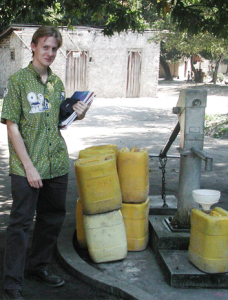Analysis of the impacts (costs and benefits) of environmental health interventions
 The measurement of demand described here is only one activity within my larger personal research agenda that centers on understanding the extent to which: a) people actually understand (or believe) the benefits of environmental health improvements; b) private provision of these goods and services can actually work to achieve their widespread adoption and use; and c) public sector or outside intervention is needed and/or justified (on the grounds of external effects or other sorts of market failures). There is also a very important evaluation question that asks how such interventions should proceed when they are justified (e.g., subsidy, persuasion, information), and whether they are effective in practice. To address these sorts of issues, I rely heavily on the rigorous application of impact evaluation and benefit-cost analysis methods.
The measurement of demand described here is only one activity within my larger personal research agenda that centers on understanding the extent to which: a) people actually understand (or believe) the benefits of environmental health improvements; b) private provision of these goods and services can actually work to achieve their widespread adoption and use; and c) public sector or outside intervention is needed and/or justified (on the grounds of external effects or other sorts of market failures). There is also a very important evaluation question that asks how such interventions should proceed when they are justified (e.g., subsidy, persuasion, information), and whether they are effective in practice. To address these sorts of issues, I rely heavily on the rigorous application of impact evaluation and benefit-cost analysis methods.
My work in this domain encompasses two main types of research efforts:
- Using simulation methods to demonstrate that benefit-cost outcomes for environmental health interventions are highly variable across targeted developing country locations; a simple ranking of interventions across sectors is therefore generally impossible;
- Evaluation of the effectiveness of various programs and interventions, such as Seva Mandir’s cookstove promotion program described above, rural water supply projects in several countries, or Millenium Challenge Corporation investments in urban water and sewerage improvements in Zarqa, Jordan.


